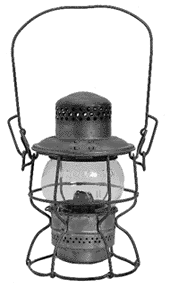|
In the early days of the colony, the only available fuels
for illumination were whale and seal oil, which were burned in smoky glass-chimneyed
lamps, and candles made from tallow and other fats. The masses generally relied on light
from their cooking fire, and retired to bed early.
The invention of Kerosene and Paraffin (used for making candles), was a major step
forward in technology, impacting the everyday lives of the entire population.
From 1813 to 1824, William Lawson was engaged in the construction of a by-pass
road, to avoid the steep gradients associated with Cox's road down Mt York (on the western
escarpment near Mt Victoria). This road followed a gully called Long Alley, now known as
Lawson's Long Alley. Lawson reported, to the Governor, finding a three-foot seam of
"coal".
Kerosene shale looks like coal, but is much lighter in weight. It can be black or dark
green in colour, has a silky sheen and is greasy to the touch. It consists of bituminised
mud or clay, whilst coal is carbonised plant tissue. The term "oil shale" is,
today, applied to any rock which produces oil on heating, whilst high grade oil shale is
called torbanite. Torbanite was named after Torbane in Scotland, which came to be
associated with the Boghead deposits discovered in 1844. At the time, the mineral became
known as Boghead Mineral.
|
|
In 1846, a Canadian, Dr Abraham Gesner,
patented a process for retorting an illuminating liquid from oil shale, which was given
the trade name "Kerosene". Gesner also invented a kerosene lantern. In 1850 a
Scotsman, James Young, patented a different retorting process, which appears to have been
adopted in New South Wales, with modifications to suit local conditions.
When torbanite is heated, gases are produced. From the condensed liquid, a synthetic
crude oil can be produced. Further refining produces petrol, kerosene, lubricating and
fuel oils, paraffin wax, tar, acids and pitch.
|
 |
Blue Mountains Region
Elsewhere
- Airly and Torbane, north of Lithgow.
- Glen Davis and Glen Alice, north of Newnes.
- Joadja, west of Mittagong.
- Mount Kembla, near Wollongong.
- Murrurundi, upper Hunter Valley.
Associated with the mines were various industrial facilities. These included retorts,
coking ovens, refineries, and candle factories. It is hard to imagine, today, that places
such as Hartley Vale once contained mines and refineries.
Kerosene and candles were exported to Asia and the Pacific. High grade ore was exported
to the U.S.A. and U.K. prior to being refined, a situation which contributed to the
eventual demise of the industry in 1931. Other factors included high extraction and
processing costs, and increased overseas production of natural crude oil.
|
Industrial ruins at Newnes.
These igloo shaped brick kilns were built in 1907 for making coke from coal, and were used
until 1911. Some remain in excellent condition.Photo: D. Martin, 1979. |
 |
|
|
|